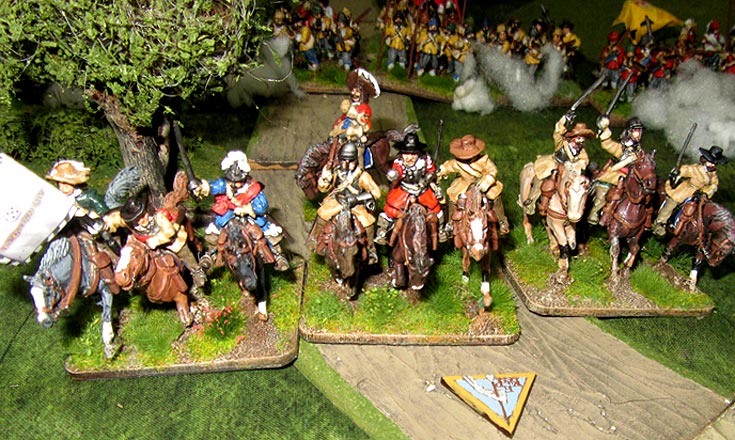
The High Melton Rout 1643
23rd January 2025, 2 Comments
The English Civil War, For King & Parliament, 28m
After a couple of weeks fighting with tanks in Russia, we hankered for something less modern and closer to home for this week’s game. We settled on the English Civil War, and a small game set amid our fictional struggle for control of South Yorkshire between the Earls of Rotherham and Doncaster. They’re the alter egos of Sean and I, with Rotherham a Parliamentarian grandee, and Doncaster a Royalist one. This week saw a Parliamentarian raid into Royalist territory, hoping to seize the enemy outpost at High Melton, to the west of Doncaster. However, the Earl of Doncaster got wind of the foray, and placed a small force in Rotherham’s path, a mile or so south of the village. That’s Robert Percy, Earl of Rotherham up above, at the head of the three foot and two horse regiments that made up the Parliamentarian force.
This week saw a Parliamentarian raid into Royalist territory, hoping to seize the enemy outpost at High Melton, to the west of Doncaster. However, the Earl of Doncaster got wind of the foray, and placed a small force in Rotherham’s path, a mile or so south of the village. That’s Robert Percy, Earl of Rotherham up above, at the head of the three foot and two horse regiments that made up the Parliamentarian force.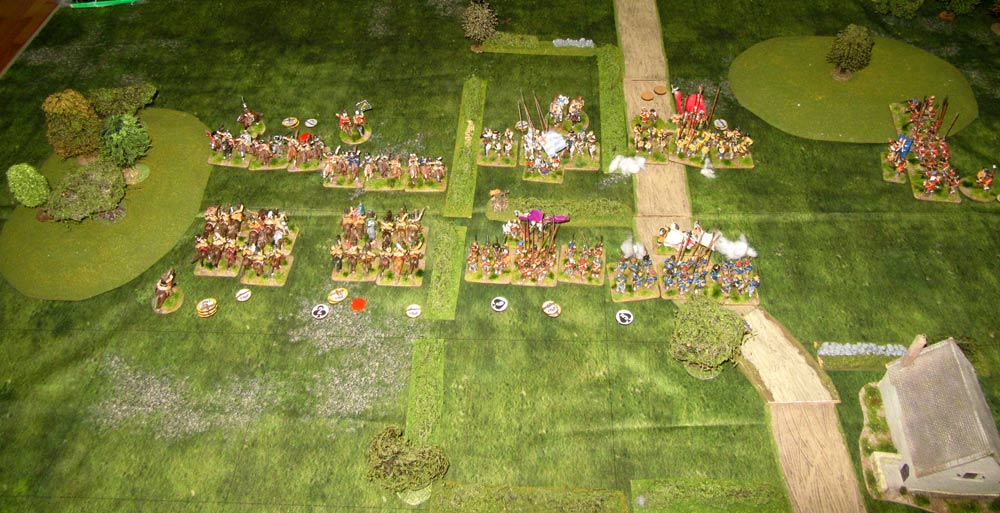 Doncaster’s own force was roughly the same size, and when the Parliamentarians approached the village up Melton Mill Lanes, they saw the Royalists deployed in battle array, and advancing towards them. The two sides clashed in the fields to the south-west of High Melton. On the Parliamentarian side, the two leading foot regiments, Rotherham’s and Boothroyd’s advanced into the enclosures to west of the road, to face off the enemy foot.
Doncaster’s own force was roughly the same size, and when the Parliamentarians approached the village up Melton Mill Lanes, they saw the Royalists deployed in battle array, and advancing towards them. The two sides clashed in the fields to the south-west of High Melton. On the Parliamentarian side, the two leading foot regiments, Rotherham’s and Boothroyd’s advanced into the enclosures to west of the road, to face off the enemy foot. 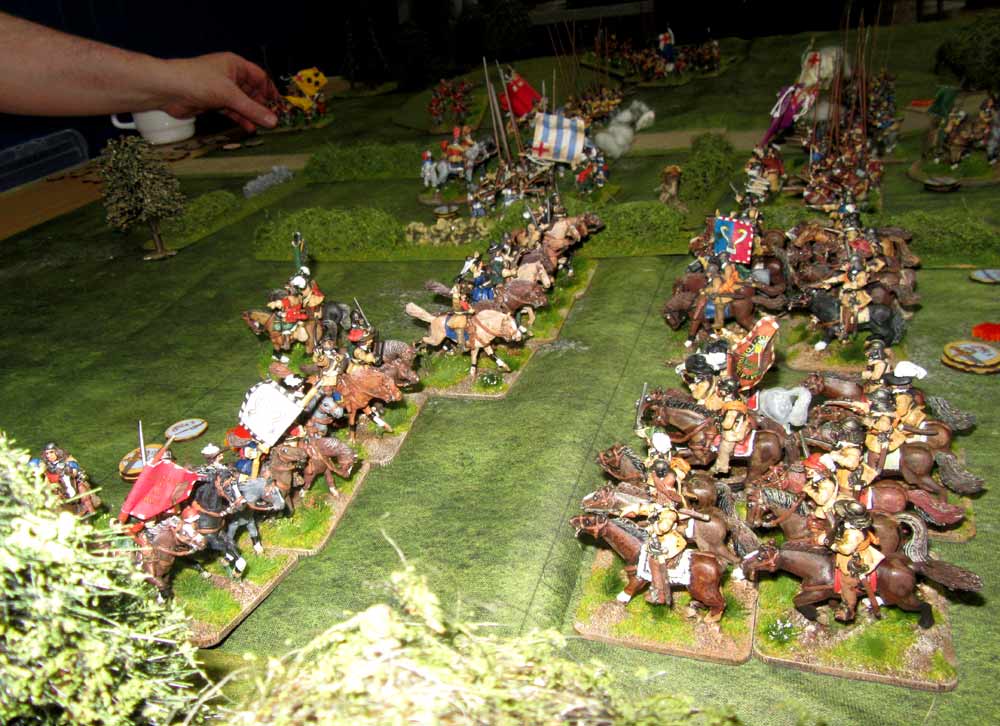 On the left, the two regiments of horse, Arkwright’s and Richardson’s deployed to to the left of the foot. they were in old style ‘Dutch’ array, while the three smaller Royalist regiments facing them – Greenwood’s, Wentham’s and Longfellow’s were in the more modern ‘Swedish ‘ array. All the Royalist horse was seasoned, as was Arkwrights, but Richardson’s was classed as raw. Without a pause, both cavalry forces began advancing towards each other.
On the left, the two regiments of horse, Arkwright’s and Richardson’s deployed to to the left of the foot. they were in old style ‘Dutch’ array, while the three smaller Royalist regiments facing them – Greenwood’s, Wentham’s and Longfellow’s were in the more modern ‘Swedish ‘ array. All the Royalist horse was seasoned, as was Arkwrights, but Richardson’s was classed as raw. Without a pause, both cavalry forces began advancing towards each other. 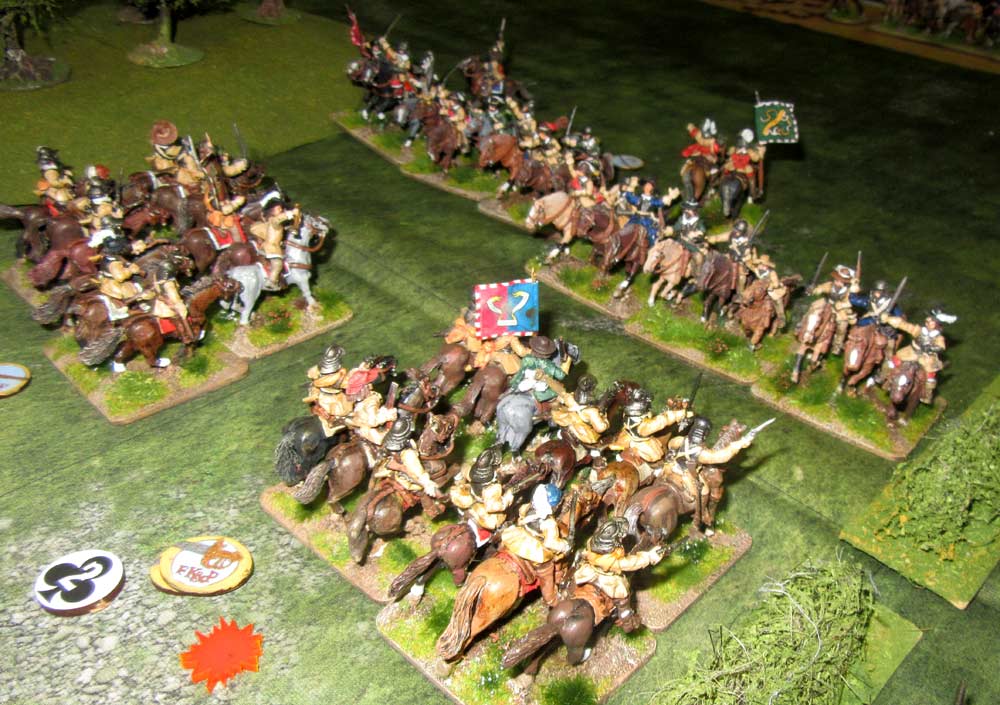 The Parliamentarians charged, but their trotting cavalry were counter-charged by the Royalist gallopers, and took the enemy charge at the halt. This worked okay for Arkwright’s, but Richardson’s were disordered in the first clash, as was Greenwood’s for the Royalists. Both cavalry commanders pulled back to recover their disorder, although the Parliamentarian one, Sir Benjamin Harrison was wounded, and was led from the field, dripping blood.
The Parliamentarians charged, but their trotting cavalry were counter-charged by the Royalist gallopers, and took the enemy charge at the halt. This worked okay for Arkwright’s, but Richardson’s were disordered in the first clash, as was Greenwood’s for the Royalists. Both cavalry commanders pulled back to recover their disorder, although the Parliamentarian one, Sir Benjamin Harrison was wounded, and was led from the field, dripping blood.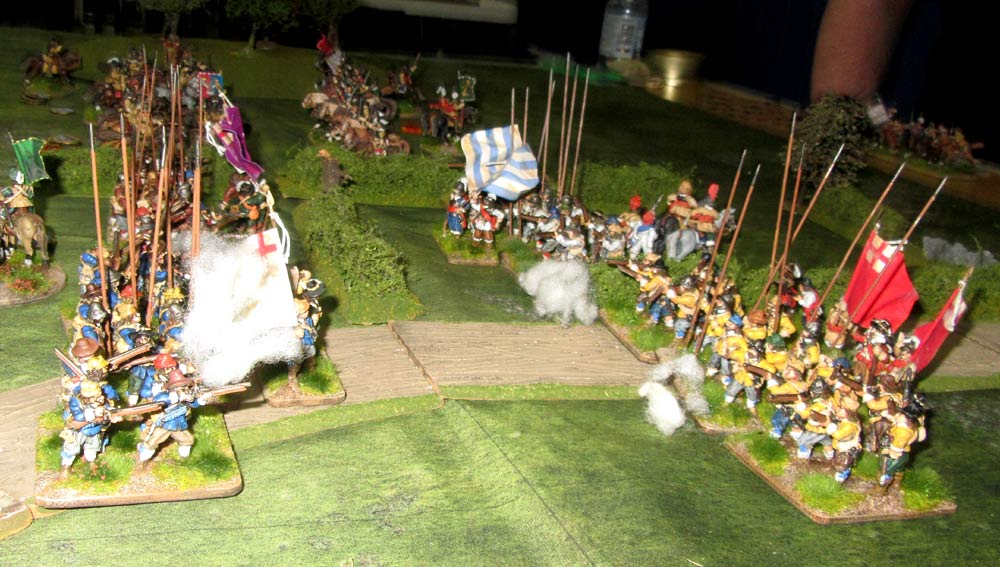 The infantry though, were getting stuck in. Both Boothroyd’s ‘bluecoats’ and Barraclough’s Royalist ‘yellowcoats’ were fully exposed, and both suffered hits, while to the west, Rotherham’s ‘redcoats’ and the Royalist ‘Barnsley Trained Bands were firing at each other over a hedgerow, and didn’t achieve much of anything, apart from wasting lead. It was an impasse, but I hoped my Trained Bands, advancing on the Royalist left flank would turn the tide.
The infantry though, were getting stuck in. Both Boothroyd’s ‘bluecoats’ and Barraclough’s Royalist ‘yellowcoats’ were fully exposed, and both suffered hits, while to the west, Rotherham’s ‘redcoats’ and the Royalist ‘Barnsley Trained Bands were firing at each other over a hedgerow, and didn’t achieve much of anything, apart from wasting lead. It was an impasse, but I hoped my Trained Bands, advancing on the Royalist left flank would turn the tide. 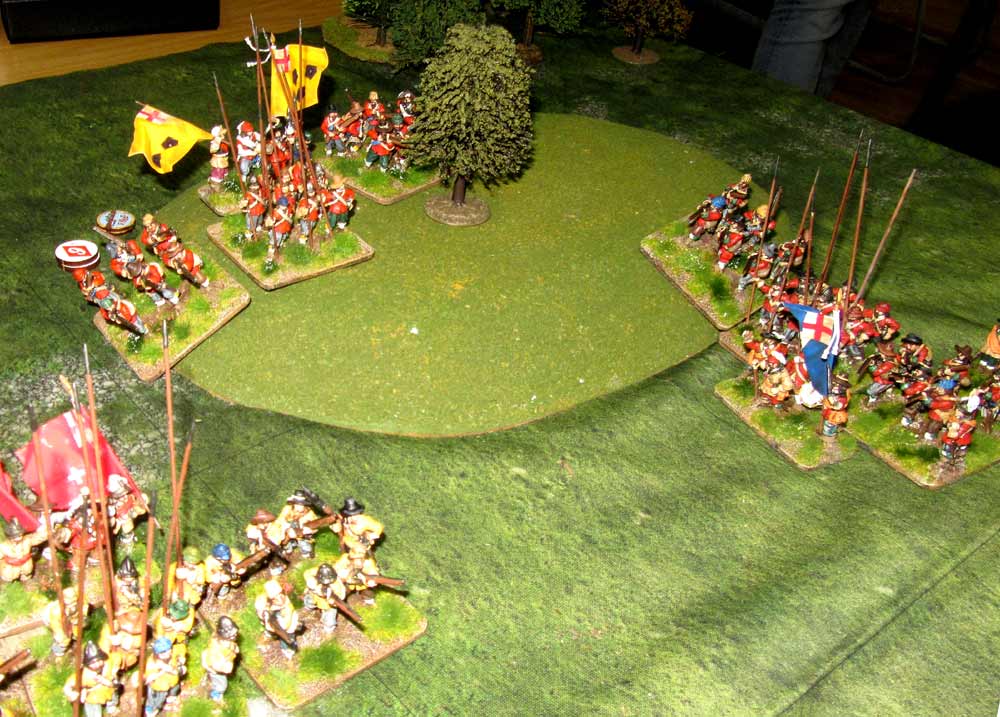 Alas it wasn’t to be. Before the game started, we both drew chits for ‘Strategems’. Mine was useless, but Sean pulled a blinder – two of his units would appear partway through the game, from a random table edge. I could deal with the first one – Doncaster’s red-coated foot, who advanced from the direction of the village, appearing on the brow of a low hill, on the flank of my russet-coated Trained Bands. It was the second unit that was the problem!
Alas it wasn’t to be. Before the game started, we both drew chits for ‘Strategems’. Mine was useless, but Sean pulled a blinder – two of his units would appear partway through the game, from a random table edge. I could deal with the first one – Doncaster’s red-coated foot, who advanced from the direction of the village, appearing on the brow of a low hill, on the flank of my russet-coated Trained Bands. It was the second unit that was the problem!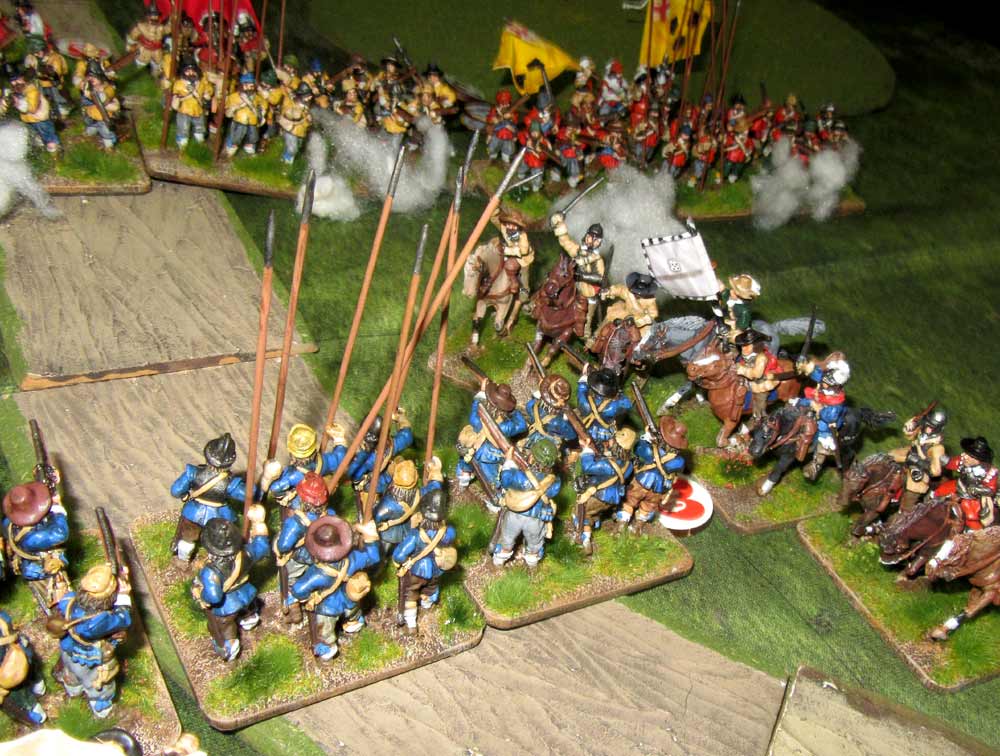 Sir Edward Longfellow’s regiment of Royalist horse appeared on the eastern table edge – directly in the rear of the poor Scunthorpe Trained Bands. The Trained Bands held them off for a turn, but by then the redcoats on the hill were shooting at their flank, and it was all too much. They broke and ran, and Longfellow’s horse ‘pursued’ straight into the flank of Boothroyd’s bluecoats, who broke and ran as well! All in all it was something of a disaster!
Sir Edward Longfellow’s regiment of Royalist horse appeared on the eastern table edge – directly in the rear of the poor Scunthorpe Trained Bands. The Trained Bands held them off for a turn, but by then the redcoats on the hill were shooting at their flank, and it was all too much. They broke and ran, and Longfellow’s horse ‘pursued’ straight into the flank of Boothroyd’s bluecoats, who broke and ran as well! All in all it was something of a disaster! 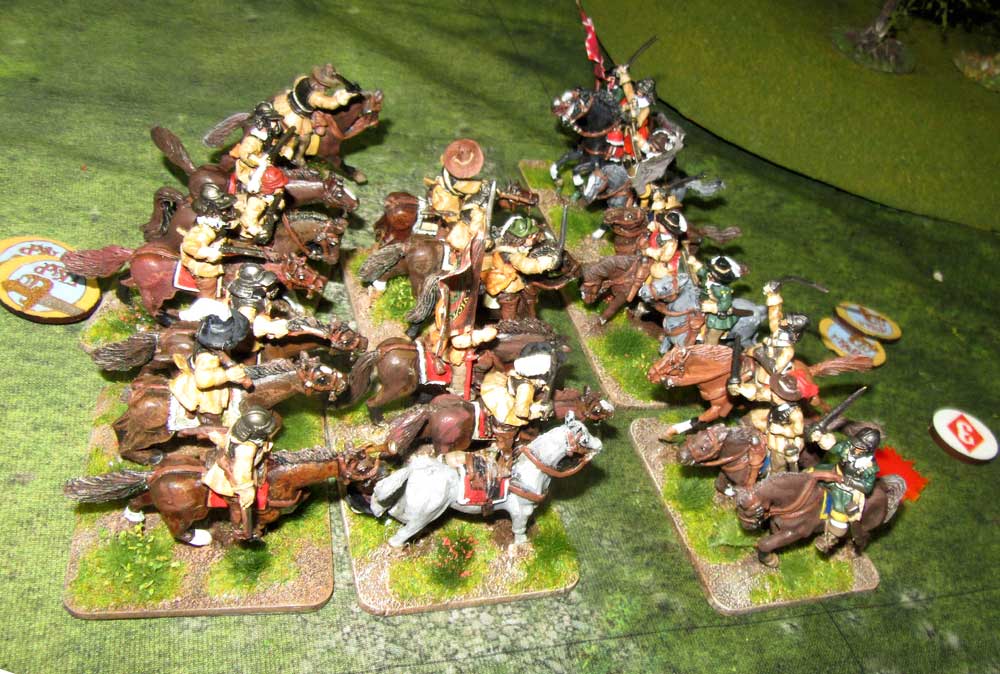 That was when the two cavalry forces decided to resume the fight. This time the Royalists wiped out Arkwright’s Parliamentarian horse in a single gallant charge, but then instead of turning on Richardson’s raw cavalry, the Royalists headed off the table, in search of the nearest baggage train. For their part Richardson’s had disordered the second Royalist cavalry regiment, Wenthams, which retired. Sensibly the raw Parliamenarians didn’t pursue them.
That was when the two cavalry forces decided to resume the fight. This time the Royalists wiped out Arkwright’s Parliamentarian horse in a single gallant charge, but then instead of turning on Richardson’s raw cavalry, the Royalists headed off the table, in search of the nearest baggage train. For their part Richardson’s had disordered the second Royalist cavalry regiment, Wenthams, which retired. Sensibly the raw Parliamenarians didn’t pursue them. 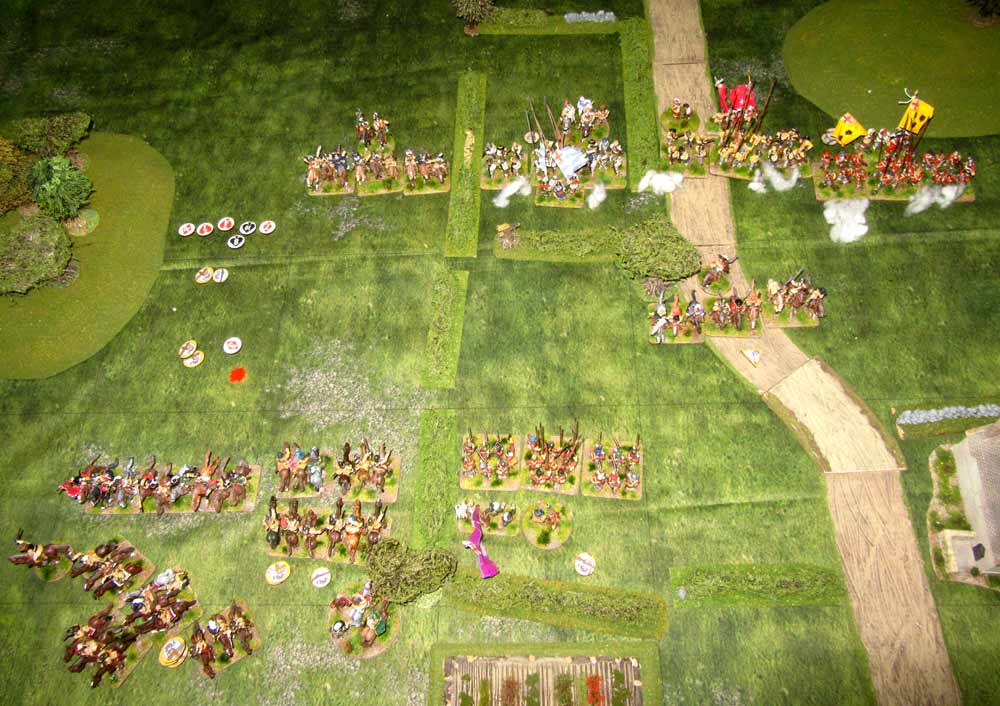 The only thing that saved me from losing my third regiment of foot, the Earl of Rotherham’s ‘redcoats’ was that the all-victorious Royalist horsemen of Sir Edward Longfellow’s regiment also decided to ‘pursue’ the enemy, and loot things rather than finish the fight. So, the somewhat dispirited Earl of Rotherham led his remaining troops – a unit each of horse and foot – away from the battlefield. No doubt though, he’ll be back, eager for vengeance!
The only thing that saved me from losing my third regiment of foot, the Earl of Rotherham’s ‘redcoats’ was that the all-victorious Royalist horsemen of Sir Edward Longfellow’s regiment also decided to ‘pursue’ the enemy, and loot things rather than finish the fight. So, the somewhat dispirited Earl of Rotherham led his remaining troops – a unit each of horse and foot – away from the battlefield. No doubt though, he’ll be back, eager for vengeance! 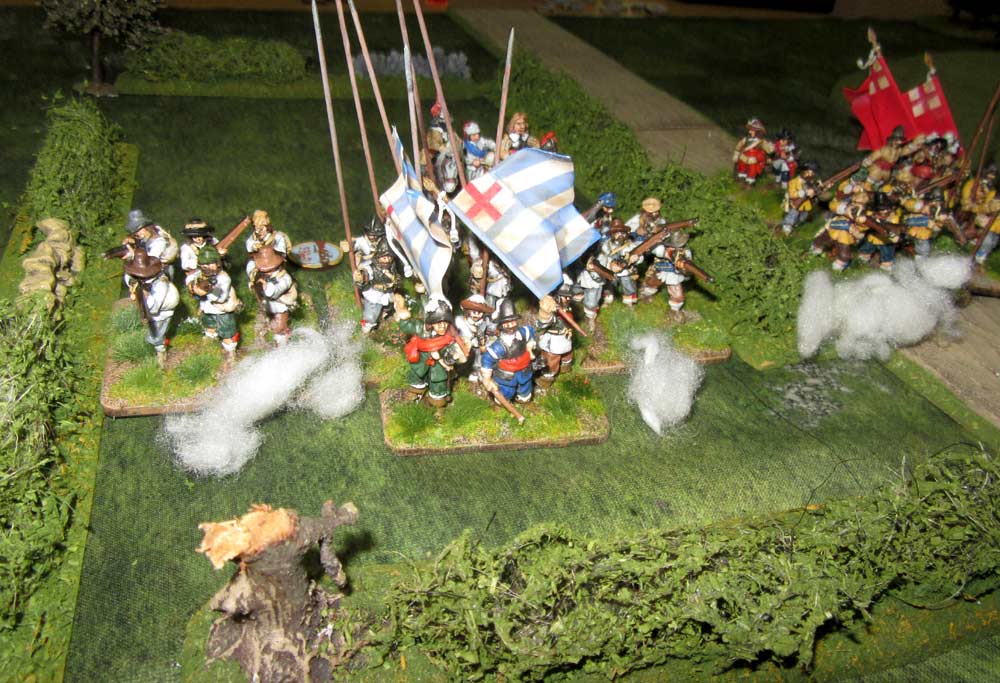
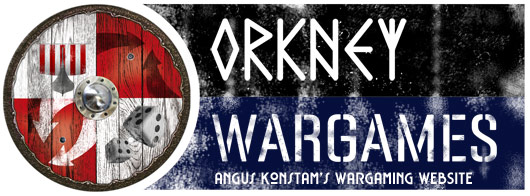
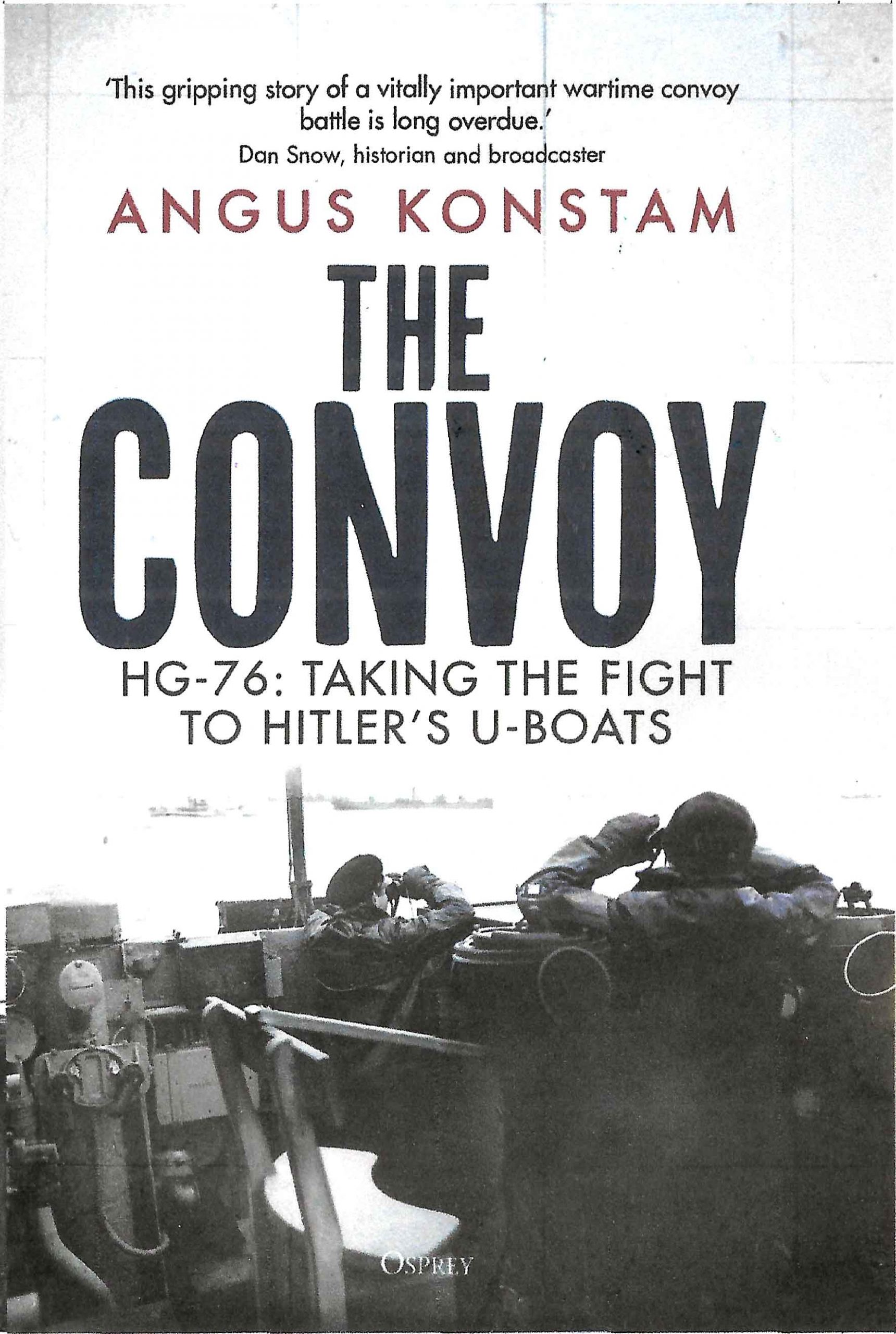
Angus, how do those rules work for you? Do you recommend them?
Peter, they use squares on the tabletop, which governs movement and firing without the need for measuring. You’ll either like the system, or you won’t.
Also, instead of rolling dice, you draw cards – or in our case little MDF playing card counters, supplied by Warbases.
I think it works very well – its the same system we use for Ancients too – and it produces a fast and fairly realistic game.
You can get them from bigredbatshop.co.uk. Thoroughly recommended for ECW games.. and Ancients for that matter!